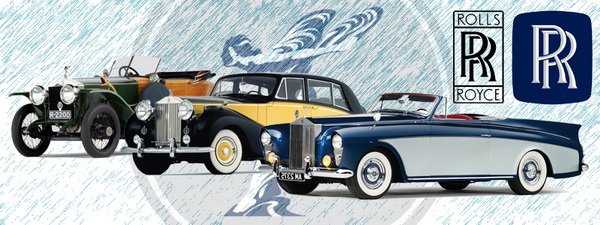
"Frederic Henry Royce," the gentleman who just walked in extended a hand to shake. "Charles Steward Rolle," the young man introduced himself. Thus began the history of Rolls-Royce.
Mechanic-self-taught, and a talented entrepreneur, standing at the helm of a large company "Royce Ltd."Henry Royce and a graduate of the prestigious Trinity College of Cambridge, the owner of a million-dollar fortune fanatically passionate about cars and airplanes, Charles Rolle, years later will remember his meeting as an incredibly successful set of circumstances.
At that time, Henry Royce, having managed to build a business on the construction of electrical appliances and cranes, was looking for a talented and ambitious partner with whom he could start a new business and realize the dream of a lifetime: the production of first-class cars. Quite by chance, learning about the richer Charles Rolls, who was able without any experience to successfully trade in the UK French cars, Henry decided that this is the one he was looking for. Despite the difference in age, origin and social status, one United them — burning, violent perfectionism, without discounts and indulgences both to themselves and to others. Royce's engineering genius and Rolls ' ability to create an enticing trade offer on the market turned out to be enough for the success of their business Alliance.
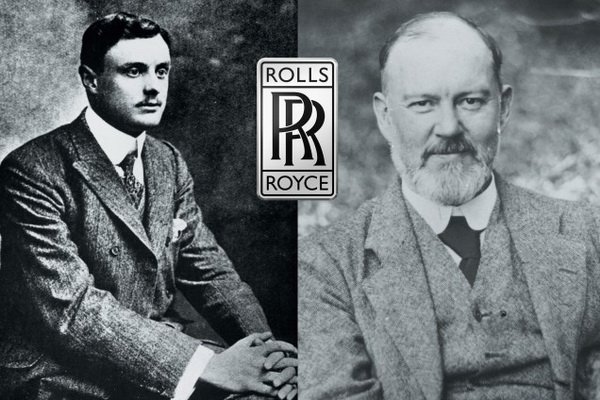
And it all began a year earlier, when Henry Royce bought a car of the French brand Decauville and, finally disappointed in the quality, began to bear the idea of creating his own car, which would be fully consistent with his demanding taste. He shared his idea with Charles during their first meeting at the restaurant "Midland". In may, the honorable gentlemen signed a partnership agreement, and in December of the same year at The Paris motor show was presented the first car of the new brand Rolls-Royce — 10 hp at a price of 395 pounds.
The car was based on the French Decauville, disappointing Royce. Partners managed to make the engine of the car much quieter and install the original engine with an improved crankshaft. The company did not deliver the body, giving the buyer the opportunity to choose the most suitable option. By the way, on the very first car Rolls-Royce can drive so far, the car is at the private collector, who had to lay out for it at auction more than 3 million pounds.
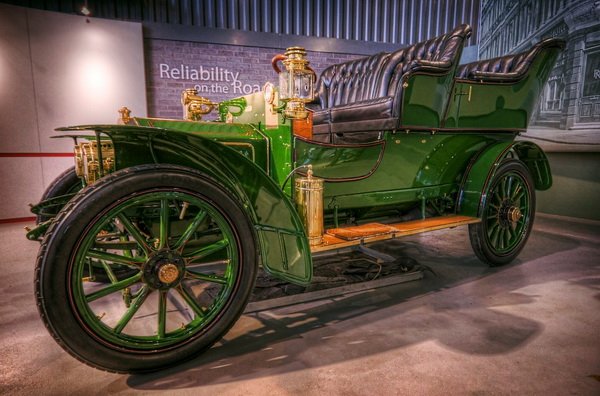
The first "simple and quiet Rolls-Royce", according to their advertising slogan, quickly gained popularity due to victories in the famous rally in Monte Carlo and the United States.
Two years Henry and Charles devoted to the creation of a completely new car, which determined the ideology and the fate of Rolls-Royce for several decades to come.
In 1906 appeared the Silver Ghost, and after a few months, the creators began to speak of him as "the best in the world." The model owes its unusual and mystical name to silver-plated external parts and quiet engine. The chassis cost about 985 pounds, about the same cost to the owners and the body produced by the best workshops in the UK. "Silver spirit" could reach speeds of up to 150 km/h — in those days, such a record could not boast of any sports car. The slogan of the machine sounded meaningful: "Rolls-Royce do not break, they fail."
All the cars that appeared after the Silver Ghost-Phantom, Silver Shadow, Silver Cloud, in addition to mystical names, retained a recognizable style striving for the absolute ideal of Henry and Charles: a powerful engine, exclusively manual Assembly of each car and the amazing quietness of the motor. They wanted to achieve a sound insulation, so being in the cabin, I could hear the ticking of their own watches. And have achieved his!
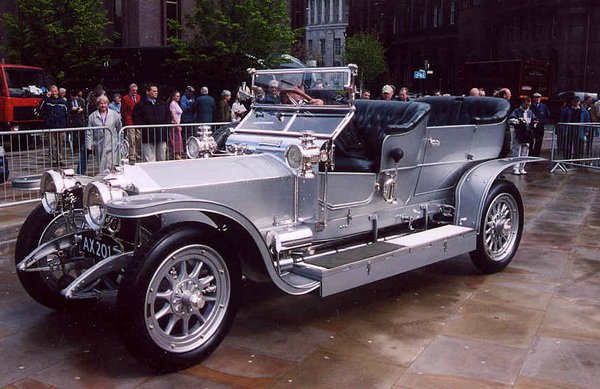
A former companion of the Rolls and Secretary of the Royal automobile Club Claude Johnson questioned the superior characteristics of the "Silver spirit" and went into a long and extreme mileage, and prepare a notebook to record the breakdown of a new car. What was his surprise when, after two thousand miles, he could not find a single error in the machine. Then he decided to increase the distance to 15 thousand miles, which is equal to 24 thousand kilometers. And when his grueling journey came to an end, there was only one failure in the logbook — a fuel tap worth £ 2.
After the successful launch of Silver spirit, the company moved from Manchester to Derby, opened a service station and a driver training school. At this time, there is recognizable around the world today the emblem of the brand is two intertwined capital letter R red. The emblem was painted black after the death of Henry Royce in 1933.
For a long time Rolls-Royce produced only one model, year after year only improving it and increasing prices exponentially. Paradoxically, the high cost of the new car brand has caused unimaginable consumer interest far beyond the borders of the UK, and soon opened the first Rolls-Royce plant in Springfield, USA.
In 1909, sir John Montague, the head of The British Royal automobile club, Lord Bellew, acquired his Rolls-Royce. To highlight his car against the rest, he ordered a nasal sculpture in the form of a "flying girl". Graceful distinctive sign was called "spirit of ecstasy", which was liked not only by John Montague, but also by the rest of the Rolls-Royce owners. Since 1911, the company began to install a sculpture on the hood of each car, at the request of customers pouring the figure of precious metals. By the way, in modern Rolls-Royce, a collision threat triggers a system that instantly opens the protective hatch and hides the legendary symbol from damage.
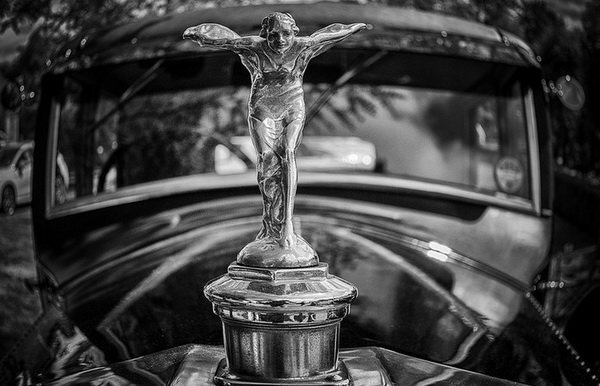
In 1913 Rolls-Royce cars were first presented in Russia at the international automobile exhibition in the Mikhailovsky Manege of St. Petersburg. The event was actively supported by Nicholas II, who immediately after its completion ordered a personal Rolls-Royce for celebrations on the occasion of the 300th anniversary of the house of Romanov. The salon of the Imperial car was decorated with silk and velvet, and gold inlays were used for the exterior decoration.
After the tragic death of Charles Rolls in a plane crash in 1910 in memory of his deceased companion, passionately passionate about piloting and aviation Department, Henry Royce opened an aviation unit, starting to produce the factory engines for aircraft. First, government orders during the First world war helped the company to survive, and then the glory of the excellent engines flew around the world and marked the beginning of a new Chapter in the history of Rolls-Royce. In 1919, the aircraft with the engine Rolls-Royce Eagle first crossed the Atlantic ocean. Winston Churchill then said,"I don't know what we should admire more: their courage, their skills, their scientific knowledge, their Rolls-Royce engines, or just their extraordinary luck."
The post-war period did not contribute to the huge demand for expensive Rolls-Royce; many potential buyers were also deterred by the outdated three-stage gearbox, which was installed on all cars. In 1925, the legendary Phantom I saw the light — an aristocratic, representative and very expensive car. Because of its old — fashioned design and lack of precision in the control of the machine went unnoticed, and in 1929 it was replaced by a modern and impressive Phantom II, and in 1936-Phantom III.
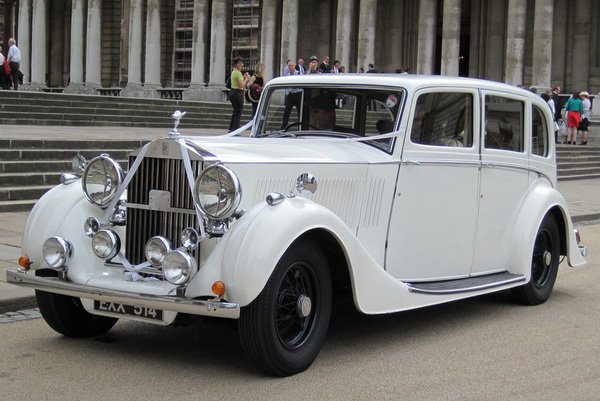
In the years of the great Depression, when many UK businesses were victims of the financial crisis, Rolls-Royce, on the contrary, went up the hill. In 1931 Rolls-Royce acquired Bentley, its only competitor that could not withstand the harmful effects of the war, preserving the brand to the present day.
With the death of the last of the founders of the brand — Henry Royce, as well as with The beginning of world war II, Rolls-Royce significantly reduced the pace of production of new models. Only in 1949 the world saw Silver Dawn, intended exclusively for export, and a year later there was another new model — Silver Cloud.
Despite the decline in sales, the prestige of Rolls-Royce was so great that in 1950 the company became the official supplier of cars for The British Royal house and other ruling and aristocratic families of the world. From that moment began the production of Phantom IV, which seemed to have been created for the leaders of the state. Thanks to a carefully designed engine cooling system, this car, which speeds up to 160 km / h, during official ceremonies could go for a long time with the speed of a pedestrian and did not overheat. It is this model with the body of the company Mulliner-Park-Ward was Princess Elizabeth and Duke of Edinburgh.
Nine years later, there was an even more perfect Phantom V with increased space for high — ranking passengers and reduced-for the driver, and in 1968 silent, without unnecessary advertising companies, the birth of the Phantom VI, able to accelerate to 180 km/h and produced exclusively with bodies such as limousine and landole, it would seem, removed all questions about the future of the brand.
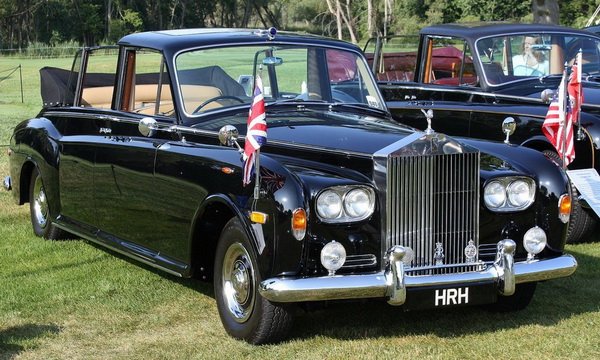
About the quality of Rolls-Royce cars and the level of service were legends. The company claimed that it is ready to perform absolutely any whim of the client, ranging from upholstery leather exotic animals and ending with the exclusive design of the body. So, at the request of the Indian Maharaja Nabhi, the British engineers turned his silver Ghost's body... Swan, sharpening the figure of a massive wooden bar, painted Rolls-Royce John Lennon psychedelic vignettes. Vladimir Lenin could boast of his unique Rolls-Royce car, for which the continental model was converted into real cars with a trolley instead of a rear bridge and rubber skis on the front wheels.
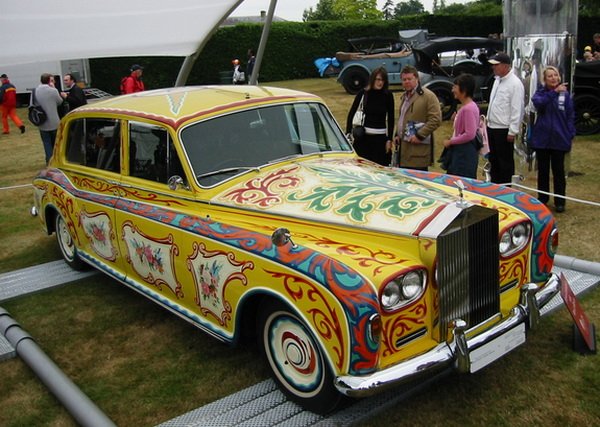
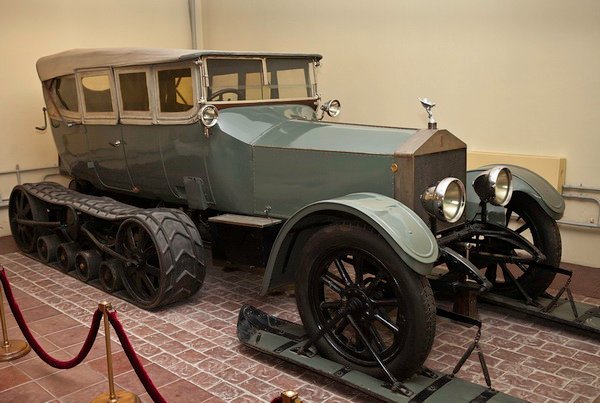
After the announcement of the bankruptcy of the company in 1971 followed several attempts to sell its automotive division, retaining the most valuable for the UK production-aviation-inviolable.
Today Rolls-Royce belongs to BMW, under the leadership of which it again became profitable, but its Golden years have long passed.
Nevertheless, the company Rolls-Royce continues to surprise its customers with first-class service and amazing reliability of their cars, each of which, like a century ago, during the life of the founders of the company, is made by hand, tested on a special test site, and then again disassembled for routine inspection, and only then going into the final version of the complete set.
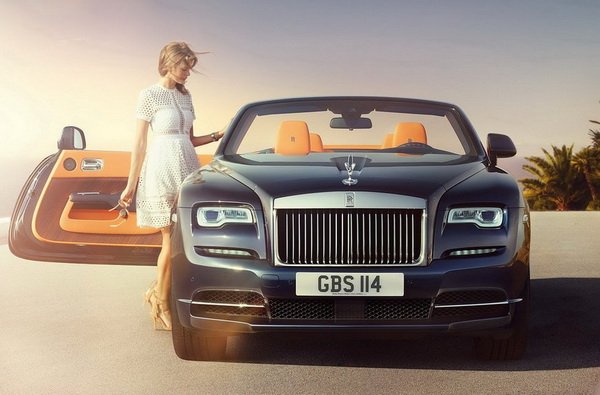
Still in spite of modern door handles make the speakers for the convenience of doorman, solution for grinding body is a closely guarded secret, and the master, working on final Assembly of machine, leaves on the windshield of his seal. But most of all, modern owners are attracted by a profitable investment, because any car brand Rolls-Royce year by year becomes only more expensive. Why? - ask you. Luxury, precision and exclusivity are all taught by Charles Rolle and Henry Royce.


@originalworks
Downvoting a post can decrease pending rewards and make it less visible. Common reasons:
Submit